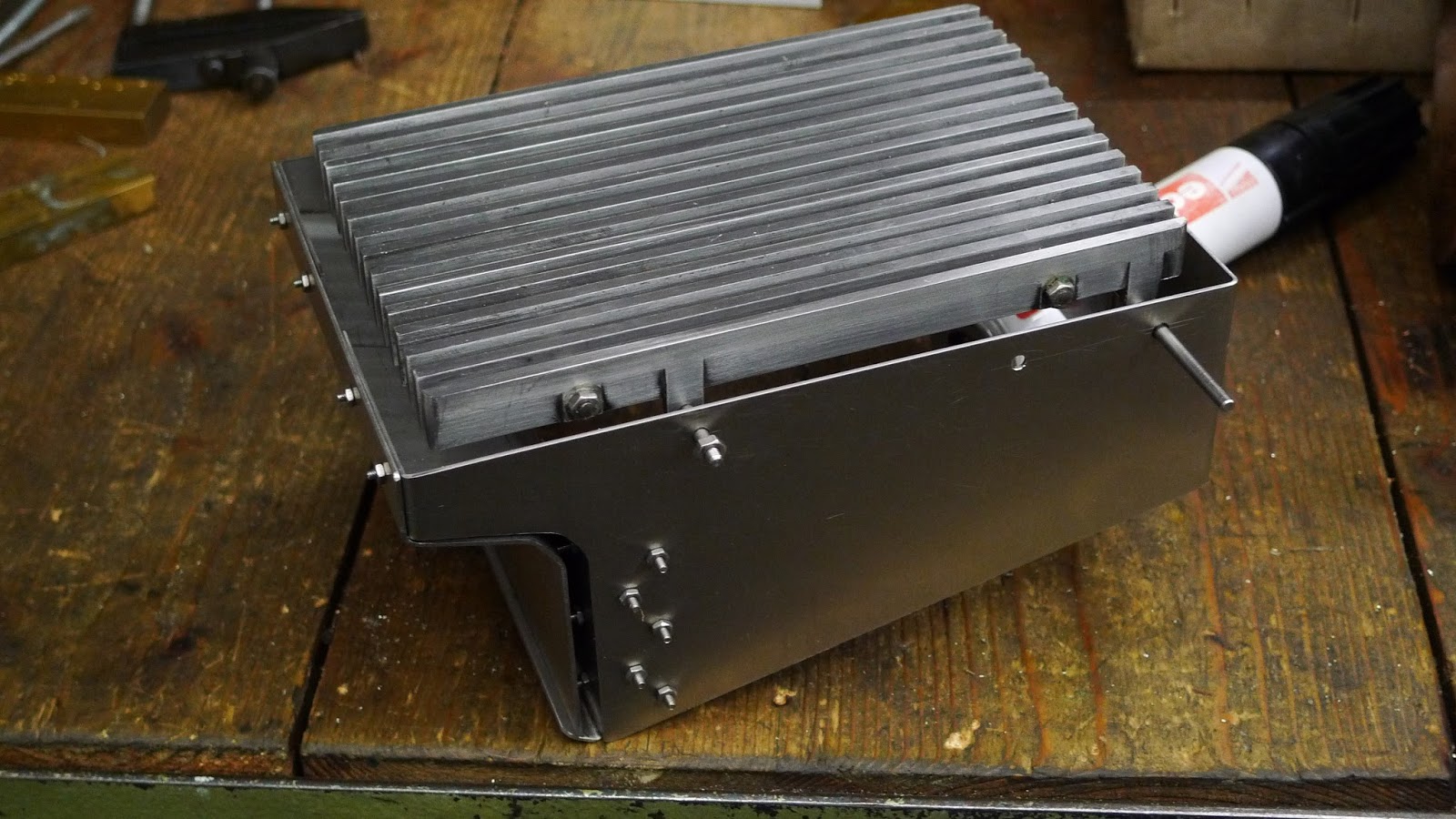
The grate and ashpan in the Solidworks drawing. The grate is hinged and can swing away when the drop pin is pulled out. The ashpan is completely open at the bottom. So there is plenty of air to keep the small coal fire burning and there will be no build-up of ashes; good for a full day of driving. If needed a separate plate can be mounted on the underside of the ashpan. I've closed the bottom of my 5" 14xx class locomotive; but this wasn't a success due to the build up of ashes which deprived the fire of oxygen in the end.
The fire grate of the T3 is only 150 x 100 mm and is a relatively simple affair. The bars are cut from stainless steel 3mm plate (316L). This takes an afternoon to saw these from a plate by hand.
On the shaping machine the strips of steel were shaped to bars of 12mm height.
In the milling machine all the holes were spotted with a centre drill.
With the aid of a simple jig, which was made on the shaping machine, the bars were V-shaped milled. Only at the position of the bushes the bar was left parallel.
A test setup with the spacer bushes in place, they are 4 mm wide.
The complete grate, viewed from the under side. The lugs in front is for the hinge pin, with which the grate is held in the boiler. The lugs on the left are for support of the so called dumping pin. If this pin is removed, the grate will swing down and the fire will be consequently dropped
The ashpan is build up from 1 mm stainless steel plate, which was left over from the kitchen renovation.
With a few M2 screws the parts are firmly bolted together.
The complete ashpan and fire grate read for assembly to the boiler. In the front there is a double plate; I saw this on real locomotives, so the radiation heat is kept away from the axle.
The grate 'in working order' at DBC-H Schackendorf 30 June 2018.
The grate 'in working order' at DBC-H Schackendorf 30 June 2018.













